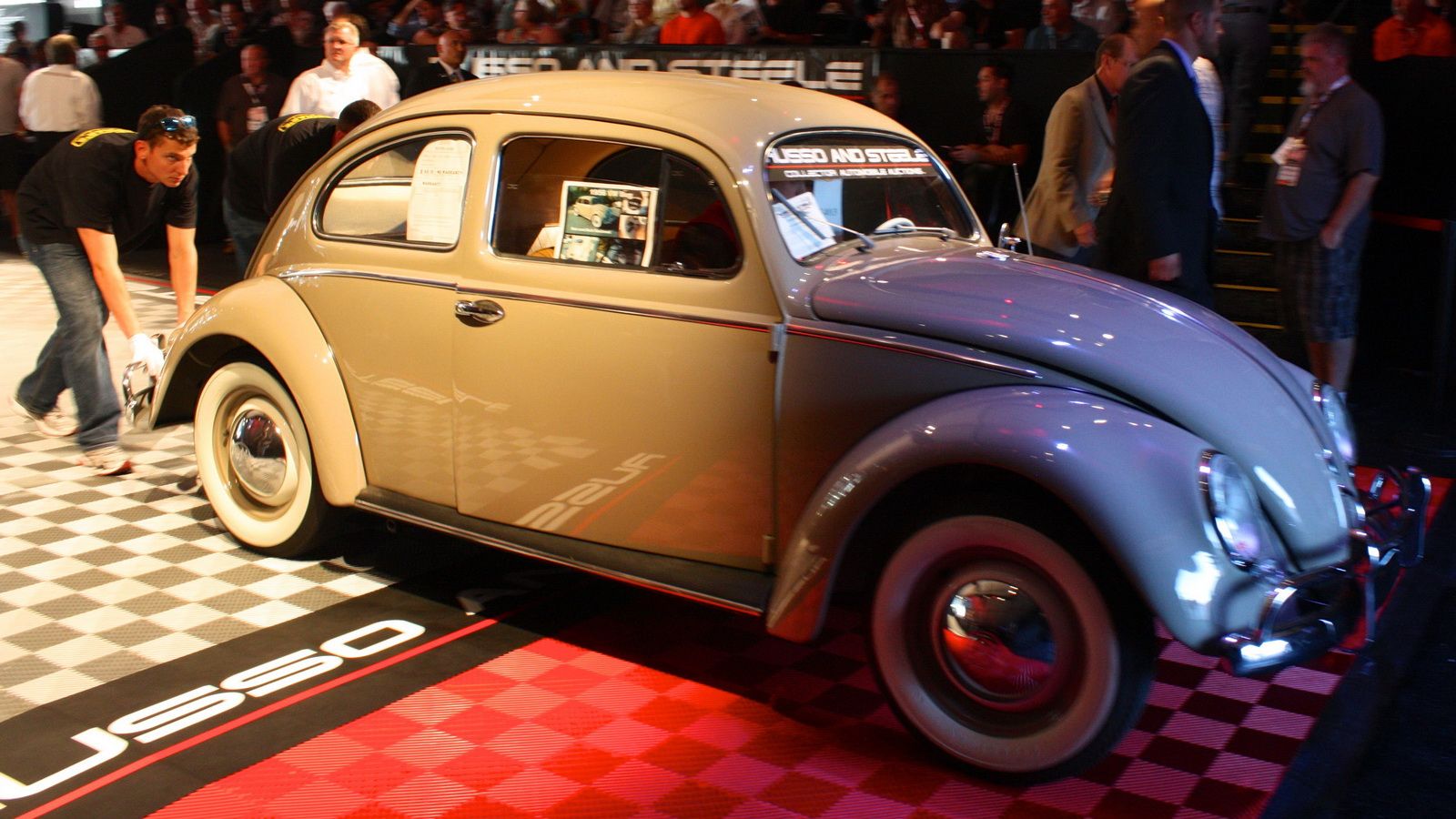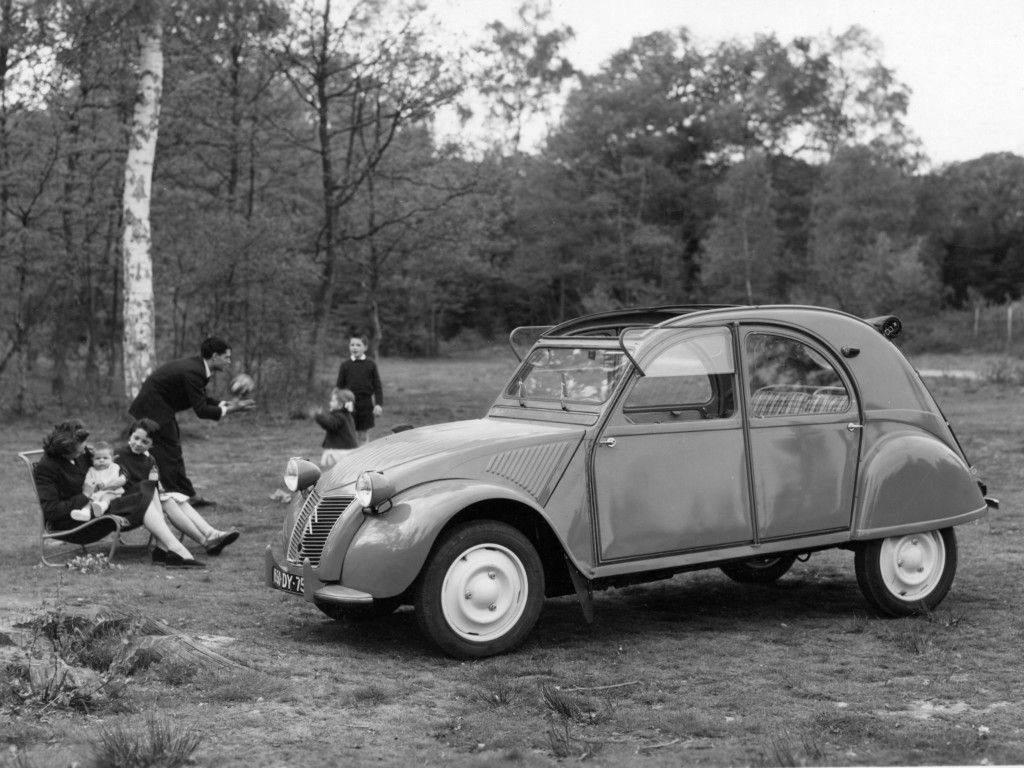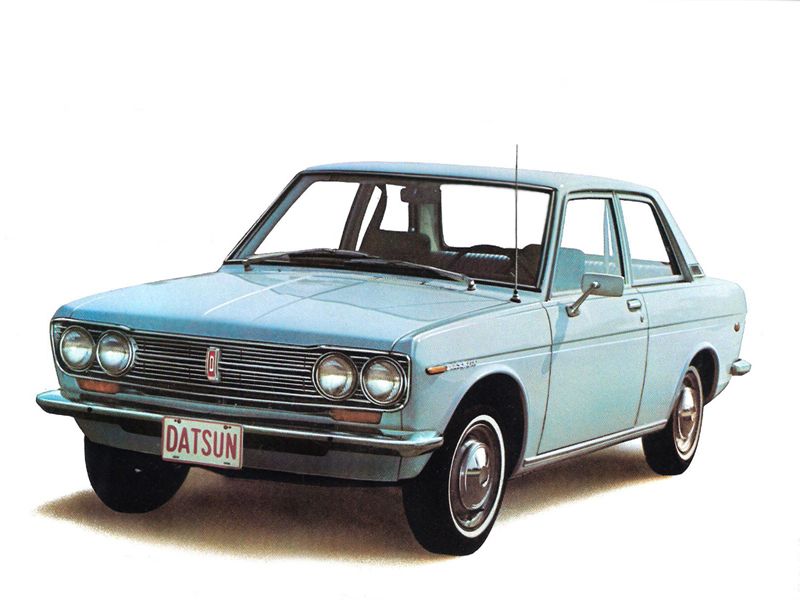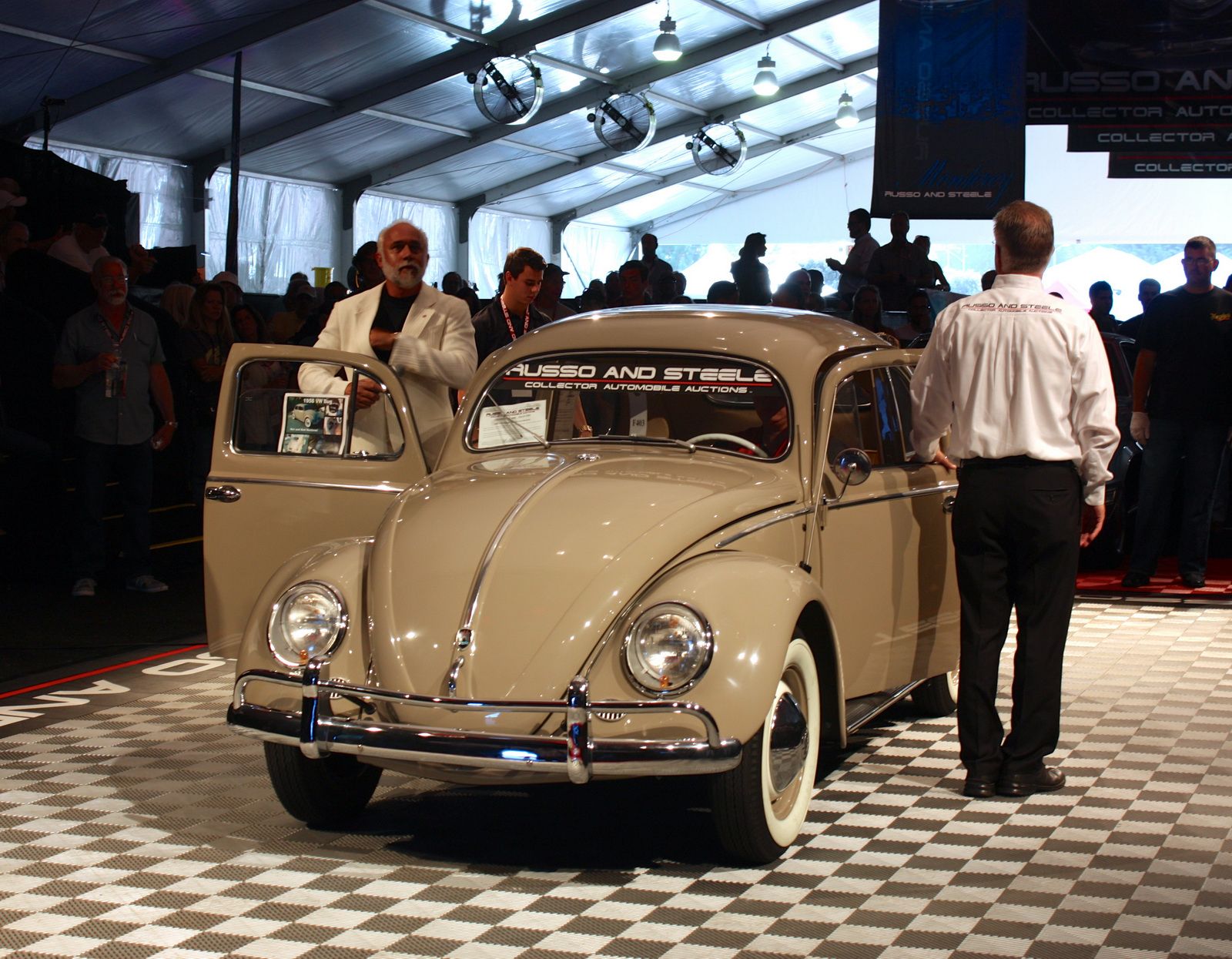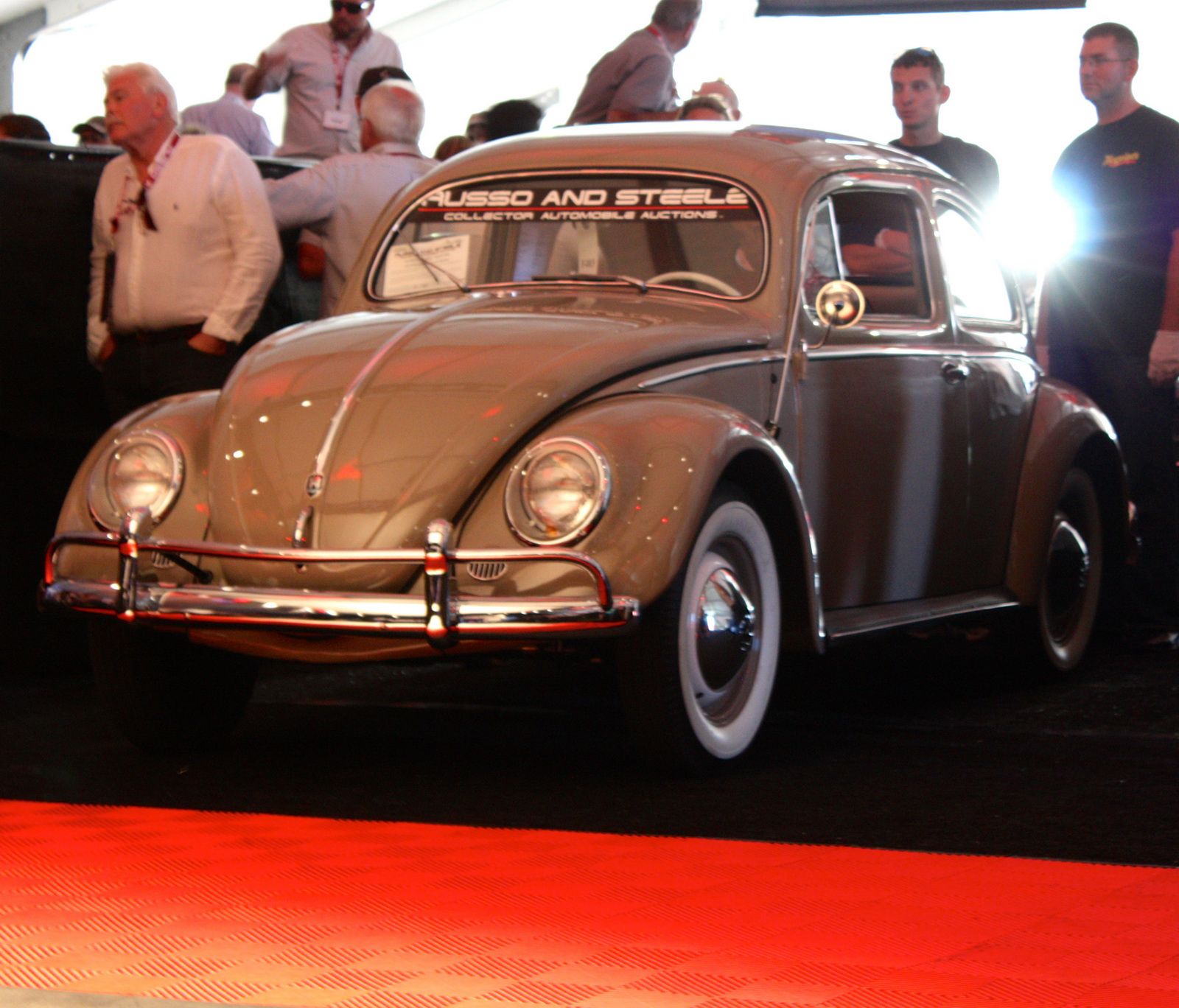There's plenty of debate whether the 1908 Ford Model T or the Volkswagen Beetle->ke318 had a bigger impact on the development of the automobile as a cultural icon. Both of these Everyman vehicles were produced in phenomenally high numbers and helped to shape the future of cars. The Model T left its mark with a low cost and incredible versatility, as well as a simple design that lasted for decades. The Volkswagen Type 1 Beetle stuck around even longer, in an era marked by constant changes in technology. So what set it apart?
The little car that would go on to sell over 21 million units was first imagined in 1933. In a twist of fate that surprises some people, the car was commissioned by Adolf Hitler, and designed by Ferdinand Porsche (who may have cribbed much of it from a Czechoslovakian Tatra). The car was intended to be a durable, easily-produced vehicle for the masses, and Hitler dubbed it the KdF-Wagen. The acronym stood for "Kraft durch Freude," which translates to "Strength through Joy." And then World War II happened.
Understandably, the KdF-Wagen didn't get off the ground. After the war, however, the factory was in British hands, and they fired it up to provide transportation for British soldiers on German soil. Renamed the Volkswagen Type 1, the car joined the ranks of simple, affordable cars like the Citroen 2CV->ke2926 and 1957-1975 Fiat 500 as the nations of Europe got back on wheels. The first Type 1 quickly picked up the nickname "Beetle," and was first imported to the United States in 1949, but it took a few years to catch on. Only 159 were sold in 1949 and 1950. Things took off in the late 1950s, and at its height the Type 1 was selling over a million units a year.
Continue reading for my full review of this original Beetle.
volkswagen-type-1-beetle
- Make: Array
- Model: volkswagen-type-1-beetle
1956 Volkswagen Type 1 Beetle
- Make: Array
- Model: 1956 Volkswagen Type 1 Beetle
- [do not use] Vehicle Model: Array
Like the Model T, the Beetle's genius was in its simplicity. Most of the body panels were relatively easy to replace without major surgery. The robust air-cooled engine was easily maintained and reliable as well as being fuel-efficient. Volkswagen's->ke94 design made it easy to keep the Beetle in good repair. The car was popular, too. It was the first imported car to make significant inroads into the American car market, in spite of being considerably smaller and more frugal in an age of longer, lower and wider cars.
Continuous upgrades to the car addressed strength, reliability and comfort issues without changing the basic platform. The Beetle became the basis for other VW models as well, from German military vehicles to the also-legendary Volkswagen 1955-1974 Karmann-Ghia. The Beetle stayed in production until 1979 (and until 2003 in South America) without many fundamental changes. By that time it had not only secured VW's fortunes, it had helped to create an entirely new school of automotive style.
Exterior
Few cars are as iconic and instantly recognizable as the Beetle. Volkswagen designed the car for easy construction and repair, and it reflected the designs of the 1930s with separate fenders and running boards. The rounded body featured a unique split rear window and graceful curved lines that formed an arch between the windshield and rear deck. It was extraordinarily simple compared to other cars of the time. The bodywork was basically bolted to a flat chassis deck which relied on a structural tunnel in the center for strength. Early Type 1s had mechanical turn signal indicators. The engine was in the rear, of course, with a trunk up front.
As the Beetle's popularity grew, fancy options like a full-length canvas sunroof and revised chrome trim were added. The split window became an oval in late 1952, and a larger rear window came along in 1965. This year also brought a revised greenhouse and a bigger curved windshield. Design tweaks happened throughout the 1950s and 1960s, though the most noticeable update was in 1971 when Volkswagen added a larger front end, larger taillights, reverse lights and bigger engine vents when the slightly larger Super Beetle joined the standard Beetle in the lineup.
Interior
The interior exhibited the designer's "simple is better" aesthetic. The steering wheel was a large plastic unit, the dash body-colored metal with just a couple of gauges, and the seats were metal-framed affairs. Both the shifter and the pedals were mounted on the floor. Although small on the outside, the Beetle was designed to seat two adults and three children, with a full complement of luggage stuffed inside, and it did exactly that.
The running improvements to the exterior styling improved visibility and interior room as well. The 1971 upgrade increased luggage capacity by moving the fuel tank and spare tire. Passenger-comfort updates like fresh-air vents, armrests, instrument panel revisions were added over the years.
Drivetrain
Volkswagen's 1.2 liter air-cooled horizontally opposed four-cylinder became an iconic engine in its own right. The engine was all aluminum, featuring an oil cooler in the fan shroud. It produced 34 to 36 horsepower, which when coupled with a four-speed manual transmission enabled the Beetle to tootle along at freeway speeds.
Top speed was just over 70 mph; fuel economy was about 36 mpg. In 1966 Volkswagen bumped the displacement to 1.3 liters, and in 1967 to 1.5. The 1.5 liter engine produced 52 horsepower, as well as enabling VW to install a 12-volt electrical system. Out on the road, the Beetle was slow in comparison to modern cars, but noticeably peppier than its competition. Its initial suspension design took high-speed freeway travel into account, where European competitors like the Fiat and Citroen did not.
The suspension could make this a tricky affair, however. Volkswagen installed simple transverse torsion arms at the front and swing axles at the rear. As a result, the Beetle didn't handle like the typical big-engined American car. It wasn't until 1971 that the suspension got a significant upgrade, with MacPherson struts added to the front.
This made the Beetle more nimble, as well as enabling increased luggage capacity. The updated models were known as Super Beetles, and shared the showroom floor with the older model for several years. The Super Beetle also got better engine cooling, larger front brakes and improved crash safety.
Prices
In 1951, a new Type 1 Beetle sold for $1,295. That figure crept up only with inflation: it was $1,845 in 1971 and up to $2,625 by 1974. The Beetle, unlike many collectible cars, was always a frugal family vehicle (not counting its later status as a counter-culture icon) and so "rare" is not a term that applies. Between 1949 and 1977, over 21.5 million of them were built. These cars are not hard to find. Excellent examples can be found for less than $20,000.
Competition
Chevrolet Corvair
When it came time to field a compact to counter the growing popularity of the Beetle, Chevrolet decided to try and beat Volkswagen at its own game. The Corvair was a much larger and more conventionally styled car than the Beetle, but it did feature an air-cooled engine mounted at the rear of the car. The Corvair's flat-six engine provided decent performance, and a wide range of body styles made it a versatile compact.
Citroen 2CV
Citroen's->ke22 air-cooled postwar light car was a direct competitor to the Beetle, and in many ways lived a similar lifespan. The "Deux Chaveaux" was named for the two farmers' horses it was intended to replace, and the little utilitarian vehicle was produced from 1948 until 1990 with only evolutionary changes.
Datsun 510
Datsun's->ke4307 challenger to the Beetle came along in 1968. The 510 was a typical Japanese sedan of the time, with compact, square lines and no-nonsense engineering. A strong European influence and a sophisticated suspension gave the 510 surprisingly entertaining performance.
Conclusion
The Volkswagen Type 1 is both a ubiquitous and unlikely collectible. Typically, high-volume cars are not sought after, but the Beetle is a source of good memories for so many people that the nostalgia factor has kept its popularity alive. It's also one of the easier classic cars->ke503 to restore and maintain, and can serve as a great entry point into the hobby.

